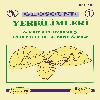Determination of coal remaining in gob at gli thick coal seam using physical modelling
Fiziksel modelleme kullanarak gli kalın kömür damarında göçükte kalan kömürü belirleme
___
- Çelik, R., 2005. Developing of Moving Procedure for Powered Supports in Ömerler Coal Mine, Phd Thesis, Osmangazi University, p: 144(In Turkish).
- Destanoğlu, N., Taşkın, F.B., Taştepe, M.& Öğretmen, S., 2000. Turkey Coal Administrations G.L.İ. Tunçbilek Ömerler Application Underground Mechanization Ankara, p:211(In Turkish).
- Everling, G., 1964. Model Tests Concerning The Interaction of Ground and Roof Support in Gate Roads, International Journal of Rock Mechanics Mining Science& Geomechanics Abstracts, Vol l,pp. 319-326.
- Hebblewhite, B., 2000. Review of Chinese Thick Seam Underground Coal Mining Practice, The Australian Coal Review.
- Hebblewhite, B. K. & Cai, Y.J., 2004. Evaluation of the Application of the Longwall Top Coal Caving (LTCC) Method in Australia, UNSW Mining Research Centre School of Mining Engineering, Sydney, Australia.
- Hobbs, D.W., 1965. Scale Model Studies of Strata Movement around Mine Roadways, Part II: The Effect of Slotting a Solid Rib. National Coal Board, MRDE Report No: 2297.
- Jeremic, M. L., 1985. Strata Mechanics In Coal Mining, A.A. Balkema Publishers, Rotterdam, Netherlands, Paper Edition, pp: 336-342.
- Kelly, M., Balusu, R. and Hainsworth, D., 2001. Status of Longwall Research in CSIRO. 20th International Conference on Ground Control in Mining, 7-9 August, Morgantown, WV, USA.
- Köse, H., Tatar, Ç., 1997. Underground Production Methods in Mines, D.E.Ü. Engineering Faculty Publication, No: 014, Izmir.
- Özfırat, M.K. & Şimşir, F., 2005. Roof Coal Recovery in a Thick Coal Seam Operating by Longwall Method, Mining Rocks Symposium, Poster Representations, Toronto, Canada.
- Özfırat, M.K. & Şimşir, F., 2007. The Studies of Determination Coal Loss Rear Face in G.L.I. Thick Coal Seam, Turkey 20th International Mining Congress Proceedings, p:33-38, 6-8 June 2007,Ankara(In Turkish).
- Singh, R. & Singh, T. N., 1998.Investigation into the Behavior of a Support System and Roof Strata during Sublevel Caving of a Thick Coal Seam, Geotechnical and Geological Engineering 17: 21-35, Netherlands.
- Şenkal, S., Köse, H., Ermişoğlu, N., 1988. The study Coal Loss and Dilution of Underground Production Method in G.L.I. Tunçbilek, Mining, Vol. XXVII, p: 5-12(In Turkish).
- TSE 2028, 1975. Determination of Uniaxial Compressive Strength, Ankara Turkish Standarts Institute(In Turkish).
- Xu, B., 2001. The Longwall Top Coal Caving Method for Maximizing Recovery at Dongtan Mine. 3rd Intl. Underground Coal Conf, UNSW, Sydney, Australia, ISBN: 0 7334 1812 0.
- Whittaker, B. N., Hodgkinson, D.R., 1971. The Influence of Size on Gate Roadway Stability. The Mining Engineer, Vol. 130, pp.203-213.
- Yavuz, H. & Fowell, R.J., 2003. A Physical and Numerical Modeling Investigation of the Roadway Stability in Longwall Mining, with and without Narrow Pillar Protection, Institute of Materials, Minerals and Mining, Vol.113, A59-72.
- ISSN: 1019-1003
- Yayın Aralığı: Yılda 2 Sayı
- Başlangıç: 1986
- Yayıncı: Çukurova Üniversitesi Jeoloji Mühendisliği Bölümü
Köprübaşı (Manisa) uranyum cevherleşmesinin mineralojik ve petrografik incelenmesi
Mehmet Nuri BODUR, Ahmet ÖZBEK, Alican KOP, Sedat CIRIK
Yahşihan (Kırıkkale) ve civarının tekno-stratigrafisi
Ahmet Can AKINCI, Ulvi Can ÜNLÜGENÇ
Bergama-Ovacık cevherinden altın kazanımında Knelson santrifüj separatörün kullanımı
Mehmet TANRIVERDİ, Sezai ŞEN, Tayfun ÇİÇEK, Gül AKAR, Üner İPEKOĞLU
Determination of coal remaining in gob at gli thick coal seam using physical modelling
Ferhan ŞİMŞİR, M. Kemal ÖZFIRAT
Yer bilimlerinde veri madenciliği uygulaması
Ağsaklar civarı (Göynük/Bolu) bitümlü kayaçlarında organik karbon ve iz element zenginleşmeleri
Doğu Pontid orojenik kuşağındaki Arhavi bölgesinin magmatik faaliyetleri
Mahmut PALUTOĞLU, A. Didem KILIÇ, Mehmet TURMUŞ
Dereyalak Köyü (Eskişehir) çevresindeki agat ve opal oluşumlarının jeolojisi ve ekonomik önemi
